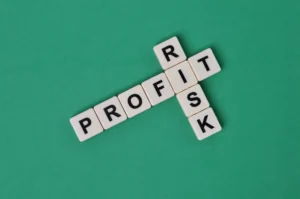Options trading in 2025 has become more sophisticated, data-driven, and accessible than at any point in financial history. Artificial-intelligence analytics, cloud-based execution systems, and real-time risk dashboards give traders insights once reserved for institutions. Yet despite these advances, consistent success still depends on discipline, patience, and structured decision-making. The foundation of profitable and risk-free options trading remains the same as it did decades ago—protect capital first, seek opportunity second, and let strategy guide emotion.
In today’s volatile environment, investors face fast-changing interest-rate cycles, algorithmic liquidity, and news events that can shift implied volatility within hours. Those who rely on impulse or social media trends often find themselves on the wrong side of price movement. Traders who apply proven rules for options trading built on probability and control, however, navigate these fluctuations with composure. They understand that every contract represents not just potential profit but measured risk exposure, and their systems are designed to minimize uncertainty rather than chase excitement.
This article details five essential principles that form the backbone of safe and profitable options strategies. Each principle explains the reasoning behind the rule, the psychological discipline it demands, and the quantitative structure that makes it work. Together, they create a framework for anyone determined to master how to trade options safely and profitably.
Rule 1 – Master Risk Management Before Chasing Profit
Risk management is not a defensive tactic; it is the engine that drives longevity. Every position entered without predefined exposure introduces randomness into performance. Traders who practice rigorous risk management in options trading define the maximum acceptable loss before they analyze reward. They decide how much of the total capital can be committed to a single idea, how much margin can be used, and how quickly losses will be cut if the thesis fails.
The modern market environment amplifies the importance of control. Volatility in 2025 can shift dramatically due to algorithmic order flow or macroeconomic headlines. Without caps on exposure, small moves become portfolio-breaking events. Professional traders typically limit per-trade risk to one or two percent of account value and maintain cumulative daily limits to prevent emotional escalation. Defined-risk structures such as vertical spreads, butterflies, and iron condors exist precisely to enforce this mathematical boundary.
A disciplined trader also treats liquidity as part of risk. Entering illiquid contracts widens bid-ask spreads and inflates slippage, eroding returns even when the direction is correct. Monitoring open interest, time to expiration, and implied-volatility rank transforms randomness into measured probability. Modern tools allow traders to quantify exactly how volatility affects premium decay, enabling them to decide when selling or buying options provides a statistical advantage.
True mastery of risk management means embracing modest losses as business expenses while eliminating catastrophic ones. When capital is protected, opportunity always returns. The pursuit of profitable and risk-free options trading therefore begins not with forecasting but with containment—knowing that consistency is built on survival, and survival depends on restraint.
Rule 2 – Focus on High-Probability Setups
A profitable trader understands that the market rewards probability, not prediction. High-probability setups generate sustainable growth because they rely on statistical edge rather than luck. In the context of profitable and risk-free options trading, probability determines whether a strategy will compound steadily or oscillate between euphoria and panic.
Modern analytics quantify every variable. A delta between 0.30 and 0.40 indicates roughly a 65 percent chance of expiring profitably. Aligning trades around such numbers converts intuition into measurable confidence. By selecting setups where probability favors the trader, the need for constant forecasting diminishes. Strategies such as credit spreads, iron condors, or covered calls translate this logic into defined frameworks: each collects premium while time decay (theta) steadily shifts odds toward profit.
However, high probability does not mean zero risk. The key is understanding payoff symmetry. Many small winners can be erased by a single unhedged loss. To prevent that imbalance, traders design positions with clearly limited downside—a hallmark of safe and profitable options strategies. They analyze implied volatility to ensure that option prices justify the exposure taken. Selling premium when volatility is elevated and closing trades as it compresses allows time to work as an ally rather than an adversary.
Psychology reinforces mathematics. Waiting for ideal setups demands patience; avoiding marginal trades preserves clarity. Professional traders often log fewer transactions but achieve greater stability because every entry meets strict criteria. In a year where global indexes oscillate within broad ranges, disciplined selection delivers smoother equity curves than reactive speculation. By making probability the compass and risk the map, traders discover how to trade options safely and profitably with a consistency that feels almost mechanical.
Rule 3 – Time Entries and Exits with Precision
Timing defines edge. Entering too early exposes capital to unnecessary theta decay; exiting too late transforms profit into drawdown. Effective, profitable, and risk-free options trading relies on recognising how price movement, volatility, and time interact throughout a contract’s life cycle.
Most professionals structure trades 30 to 45 days before expiration. Within that window, premiums remain attractive while gamma risk—the rate at which delta changes—stays manageable. As expiration approaches, time decay accelerates, benefiting sellers but punishing buyers who misjudge direction. Knowing this rhythm allows traders to match strategy with timing: sellers harvest decay, and buyers seek momentum before theta overwhelms them.
Equally vital is the discipline of exit. A predefined profit target, often between 50 and 75 percent of maximum potential, captures gain while avoiding diminishing returns. Loss thresholds are set simultaneously, ensuring that no single trade can damage overall performance. In 2025, automation tools execute these conditions without emotion, removing hesitation that historically cost traders money.
External timing factors matter as well. Economic releases, central bank decisions, and corporate earnings inject volatility spikes that distort pricing. Professionals either hedge around these events or exit beforehand. They respect that uncertainty compounds near major news and that capital preservation outweighs curiosity.
Precision also extends to daily rhythm. Liquidity peaks during overlapping global sessions; entering positions during these windows tightens fills and reduces friction. Over months, such efficiency compounds into tangible outperformance.
In short, precision timing converts strategy from theory into execution. It ensures every trade in a safe and profitable options strategy aligns with volatility cycles and market structure. The trader who times both entry and exit consciously achieves consistency not through luck but through synchronization—a measured dance between price, time, and discipline.
Rule 4 – Build and Follow a Data-Backed Strategy
Behind every successful options trader is a consistent, data-driven process. Emotion can influence judgment, but data builds conviction. A structured trading plan, based on statistics and measurable outcomes, is what separates long-term professionals from hopeful speculators. In profitable and risk-free options trading, every decision must originate from verifiable logic rather than impulse.
Developing a data-backed strategy starts with observation. Traders collect information on volatility ranges, historical win rates, drawdowns, and average duration of profitable trades. They learn which market conditions favor their setups and which destroy them. Modern analytics platforms, equipped with machine learning, allow traders to test years of historical scenarios in minutes. These insights reveal patterns that manual observation could miss.
A reliable plan always includes clear entry criteria, exit thresholds, and risk limits. For example, a trader might decide only to sell premium when implied volatility rank exceeds a specific level or to buy call spreads when a technical breakout aligns with momentum indicators. The exact logic matters less than its consistency. Once tested, the same parameters must guide every future decision until evidence demands adjustment.
Data also disciplines psychology. When performance is measured objectively, emotional swings lose influence. A trader reviewing hundreds of data points learns to see losses as part of a statistical curve, not as personal failure. Over time, this analytical mindset reinforces confidence and stability.
By grounding choices in quantitative evidence, traders ensure their systems adapt as markets evolve. They avoid chasing rumors, overreacting to headlines, or abandoning plans after temporary setbacks. In the modern era of automation, the marriage between human judgment and machine precision defines true edge. A data-backed system therefore becomes the backbone of safe and profitable options strategies, translating complexity into clarity and chaos into controlled opportunity.
Rule 5 – Master Emotional Discipline and Long-Term Thinking
Emotions remain the final frontier of trading mastery. Technology can automate execution, but it cannot eliminate fear or greed. To sustain profitable and risk-free options trading, a trader must control psychology with the same rigour used for charts and metrics.
Discipline begins with accepting uncertainty. No trade, however well analyzed, guarantees success. When traders internalize this truth, they stop expecting perfection and start managing probability. They follow their systems faithfully, knowing that statistical advantage manifests over a series of trades, not in any single outcome.
Patience plays a crucial role. The ability to wait for conditions that align perfectly with one’s strategy prevents over-trading. Many beginners lose not because their setups fail but because they abandon them too early or deviate after a few losses. Professionals view trading as a business where consistency matters more than excitement.
Long-term thinking also counters emotional fatigue. Markets fluctuate daily, but wealth grows over years. Measuring progress monthly or quarterly encourages perspective. Reviewing journals and performance reports replaces anxiety with awareness. Traders learn to refine decisions based on patterns rather than reacting to individual results.
Maintaining psychological balance requires routine. Exercise, sufficient rest, and breaks from screens keep decision-making sharp. Many successful professionals limit daily screen time once their positions are set, preventing impulsive interventions. Emotional neutrality is the most underrated skill in risk management in options trading; it ensures clarity during turbulence and restraint during euphoria.
Ultimately, discipline transforms trading from speculation into a sustainable craft. The trader who cultivates patience and self-control discovers that profitability flows naturally when emotion yields to process. This mastery defines how to trade options safely and profitably over an entire career rather than a fleeting market cycle.
Key Takeaways
- Focus on protection first. Risk control ensures longevity and resilience.
- Rely on probability, not prediction. High-probability trades create steady results.
- Respect timing. Proper entries and exits enhance profitability.
- Use data, not emotions. Consistency depends on tested strategies.
- Stay disciplined. Control emotions to maintain balance and clarity.
Conclusion
The art of profitable and risk-free options trading lies not in predicting markets but in mastering behavior, timing, and structure. The five rules—risk management, probability focus, precise timing, data-backed planning, and emotional discipline—form an integrated system where each supports the other. Together, they convert uncertainty into a controlled process and speculation into strategy.
In 2025’s AI-driven environment, technology amplifies both opportunity and temptation. The tools that make trading faster can also make errors occur faster. Only those who operate with clear rules and strong self-control will harness technology effectively. Success demands patience during flat periods, courage to execute when conditions align, and humility to accept losses as part of progress.
Avoiding the classic mistakes of overexposure, emotional trading, and negligence keeps capital intact for future setups. Applying the risk-free tips—measured sizing, macro awareness, and automation—ensures consistency. Over time, these habits become second nature, forming a professional mindset grounded in process, not chance.
Ultimately, sustainable profitability depends less on intelligence than on discipline. Every trader who respects these proven rules for options trading discovers that growth follows protection. By controlling risk, using probability as a compass, and refining decisions through data, you’ll achieve not just returns but resilience—the true mark of how to trade options safely and profitably in the modern financial era.
Read here to learn more about “VIX Index 2025 Rising Volatility Sparks Investor Market Anxiety“

I’m Chaitali Sethi — a seasoned financial writer and strategist specializing in Forex trading, market behavior, and trader psychology. With a deep understanding of global markets and economic trends, I simplify complex financial concepts into clear, actionable insights that empower traders at every level. Whether it’s dissecting winning strategies, breaking down market sentiment, or helping traders build the right mindset, my content bridges the gap between information and implementation.



